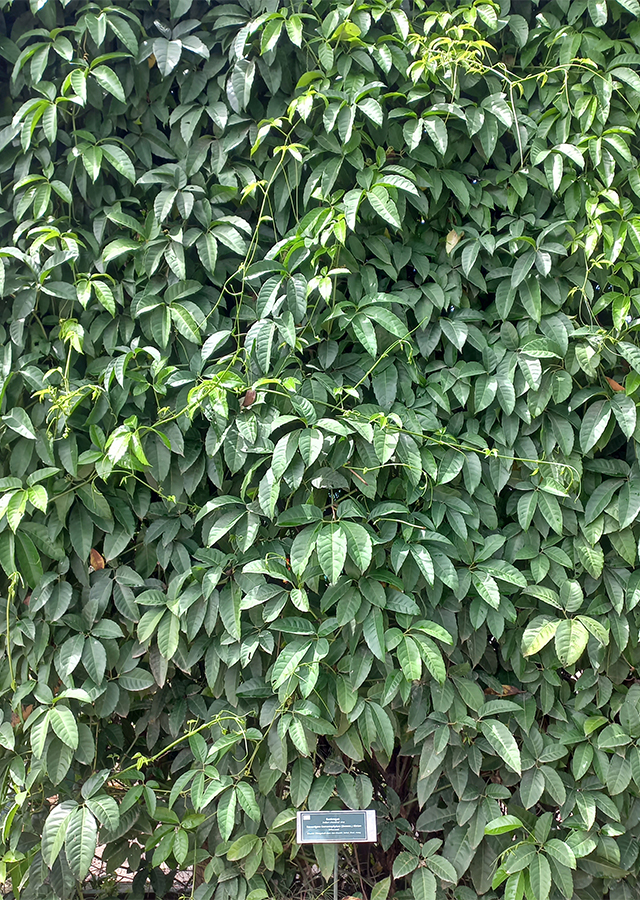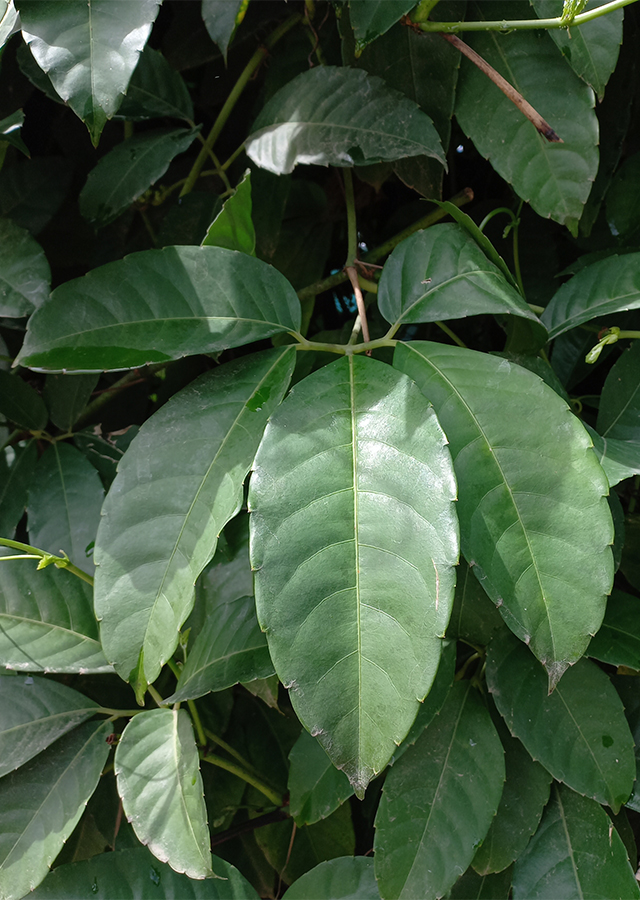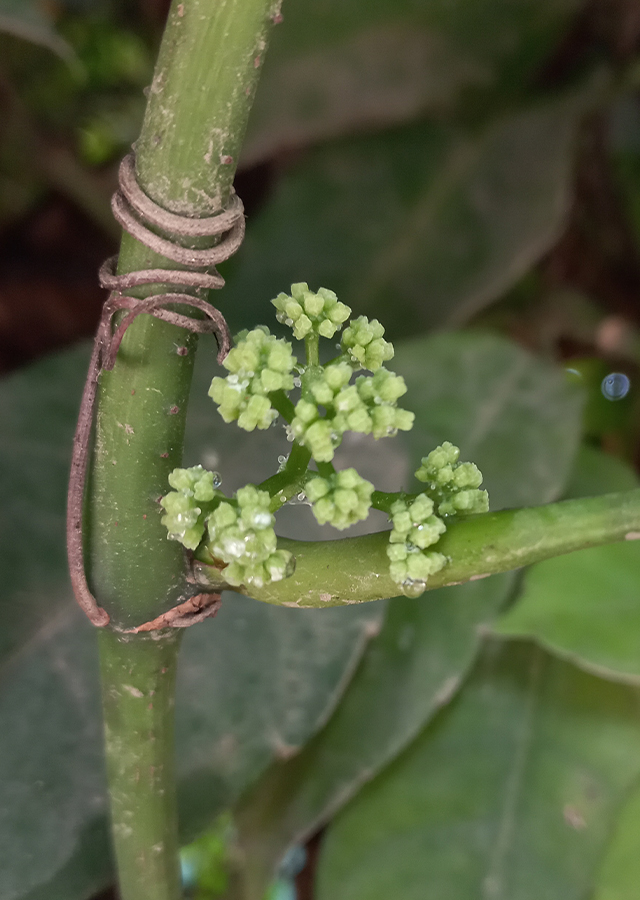Indian Chestnut Vine
Tetrastigma leucostaphylum (Dennst.) Alston
Vitaceae
Location in our garden
Principal



Synonym
Cissus dioica Roxb. ex DC.
Cissus feminea Roxb.
Tetrastigma lanceolarium Planch.
Habitus
Climbers. A dioecious woody climber and large liana with flattened stems.
Part Used
Leaves
Roots
Growing Requirements
Full Sunshine
Habitat
Riverbanks
Forest
Rocky Areas
Terrestrial
Overview
Tetrastigma leucostaphylum is native to Indian Subcontinent to West Malesia: Assam, Bangladesh, Cambodia, East Himalaya, India, Indonesia (Java and Sumatra), Laos, Lesser Sunda Is., Malaya, Myanmar, Nepal, Thailand, and Vietnam. The plant is harvested from the wild for traditional medicine, such as the leaves are used by society of Bangladesh for diarrhoea.
Vernacular Names
Pirantaikkoti (Tamil-India).
Agroecology
Tetrastigma leucostaphylum occurs at edges of lowland, hill dipterocarp forests fringe, and swamp forest, sometimes also in brushwood.
Morphology
- Stem - round when young, up to 4 cm in diameter, flatten, tuberculate with age, 6–11 cm wide, tendril bifurcate, leaf-opposed, characteristic of all members of the family.
- Leaves - leaf 3-foliolate to 5–7-foliolate, terminal leaflet lanceolate, apex acuminate, base acute, 13.5–20.5 cm by 4–9.5 cm, petiolule 2.5–3.5 cm long, lateral leaflet lanceolate, apex acuminate, base rounded, 6–13.5 cm by 2.5–6.5 cm, petiolule 0.5–2.5 cm long, margin obscurely dentate, petiole 6.5–11.5 cm long, lamina glabrous, coriaceous.
- Flowers - inflorescence a dichotomous cyme, peduncle 4–5 mm long, staminate flowers ca. 2 mm long, pistillate flowers 5 mm long.
- Fruits - berry globose, 15–20 mm across, 1–2 seeds per fruit.
- Seed - oblong, 12 mm by 6 mm, compressed, concave on one surface, rugulose.
Cultivation
Generatively propagated by seed.
Chemical Constituents
Steroid, alkaloid, tannin, flavonoid, cardiac glycoside, diterpenes, phytosterol, saponin.
Traditional Medicinal Uses
- In Java, a leaf poultice is applied to pussy inflammations, and the juice is taken to treat cough. Mamak tribes in Sumatra used for fever.
- In Peninsular Malaysia, a leaf poultice is applied to boils and in cases of ague.
- Ethnic medicine of Bangladesh used to treat diarrhea and dysentery.
- Studies have shown antiinflammatory, antidiarrheal, and anthelmintic activities.
Part Used
Reference Sources
- Flora of Singapore. (2010). Tetrastigma leucostaphylum. https://floraofsingapore.wordpress.com/2010/08/07/tetrastigma-leucostaphylum/. 06-03-2022.
- Flowers of India. (No date). Indian Chestnut Vine. https://www.flowersofindia.net/catalog/slides/Indian%20Chestnut%20Vine.html. 06-03-2022.
- Kew Royal Botanic Gardens. (No date).Tetrastigma leucostaphylum (Dennst.) Alston. https://powo.science.kew.org/taxon/urn:lsid:ipni.org:names:870591-1. 06-03-2022.
- Lemmens, R.H.M.J. (2003). Tetrastigma leucostaphylum (Dennst.) Alston ex Mabb. https://www.prota4u.org/prosea/view.aspx?id=2939. 06-03-2022.
- Rudra S. et.al. 2020. Biological investigations of the methanol extract of Tetrastigma leucostaphyllum (Dennst.) Alston ex Mabb. (Vitaceae): In vivo and in vitro approach. Journal of Advanced Biotechnology and Experimental Therapeutics, 3(3): 216-224.
- Rudra S. et.al. 2020. Evaluation of Various Solvent Extracts of Tetrastigma leucostaphylum (Dennst.) Alston Leaves, a Bangladeshi Traditional Medicine Used for the Treatment of Diarrhea. Molecules, 25: 4994. doi:10.3390/molecules25214994.

